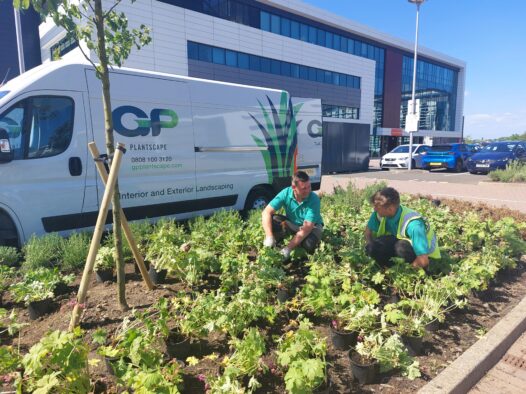In April, a further four GP Plantscape team members passed their PA6 stem injection assessment, adding strength to our invasive weed treatment team.
The increase in our capacity to provide invasive weed treatment services comes just as the season gets underway, the perfect time to commence programmes.
Invasive species such as Japanese Knotweed, Giant Hogweed and Himalayan Balsam can overcome vegetation native to the area and monopolise large swathes of land.
The non-native plants, grow rapidly and can cause extensive damage to property and the environment, while some may be damaging to human and animal health.
Furthermore, the presence of these plants can hold up developments and projects, causing additional costs and presenting risks.
It is important therefore, to be able to identify these ‘foreign’ plants and eliminate the problem – stem injection treatment is an effective method of eradication.
A stem injector has a sharp, robust needle which delivers the herbicide straight into the centre of the stem of the hollow canes of invasive weeds.
It is perfect for areas close to watercourses, vegetation, or environmentally sensitive areas as no liquid is lost to the environment.
Other key advantages of stem injection over spraying are that it can be performed in all weather conditions and it allows healthy plants to be treated in one growing season rather than over several seasons as with spraying.
The Wildlife and Countryside Act 1981, requires the responsible management of non-native plants on their property to prevent their spread into the wild. So, although there are no regulations requiring the removal of an invasive weed on a property, it is an offence to cause it to grow wild and left unattended, it may spread quickly to neighbouring land.
More guidance can be found about non-native species on the Scottish Government website and on the UK Government website.
For help in identifying or treating any non-native species please call GP Plantscape on 0808 100 3120.
Latest News
and plant care tips.


























